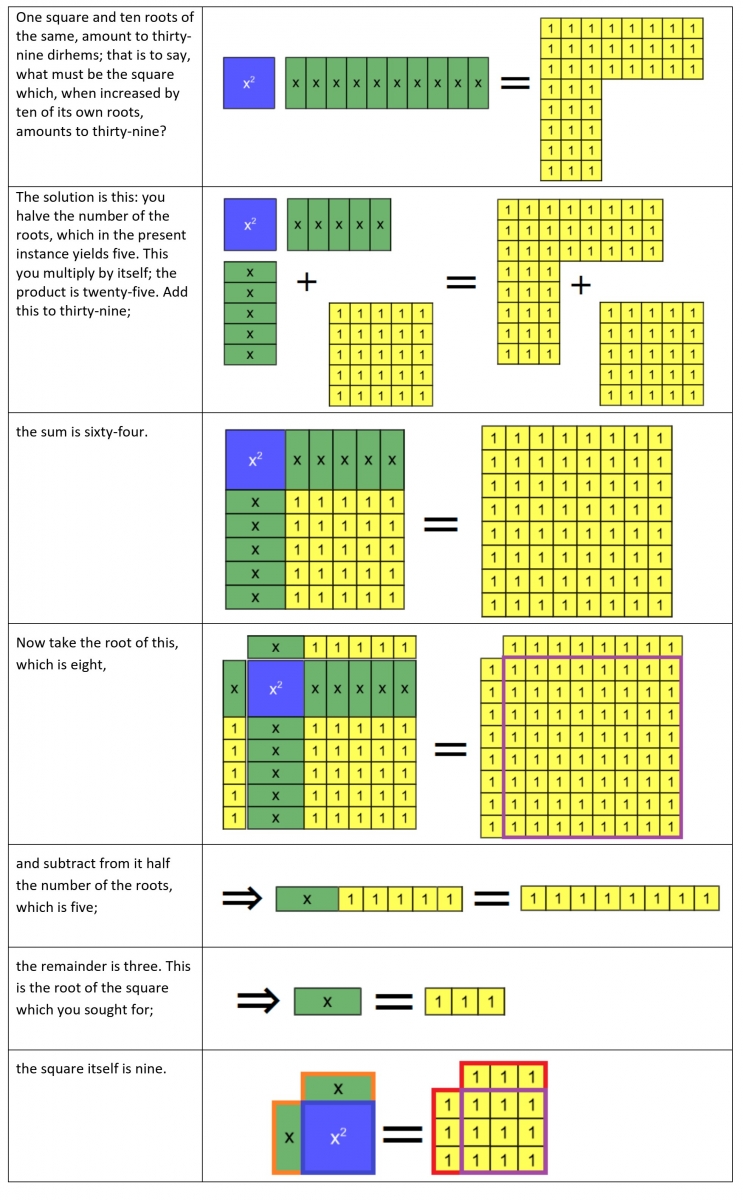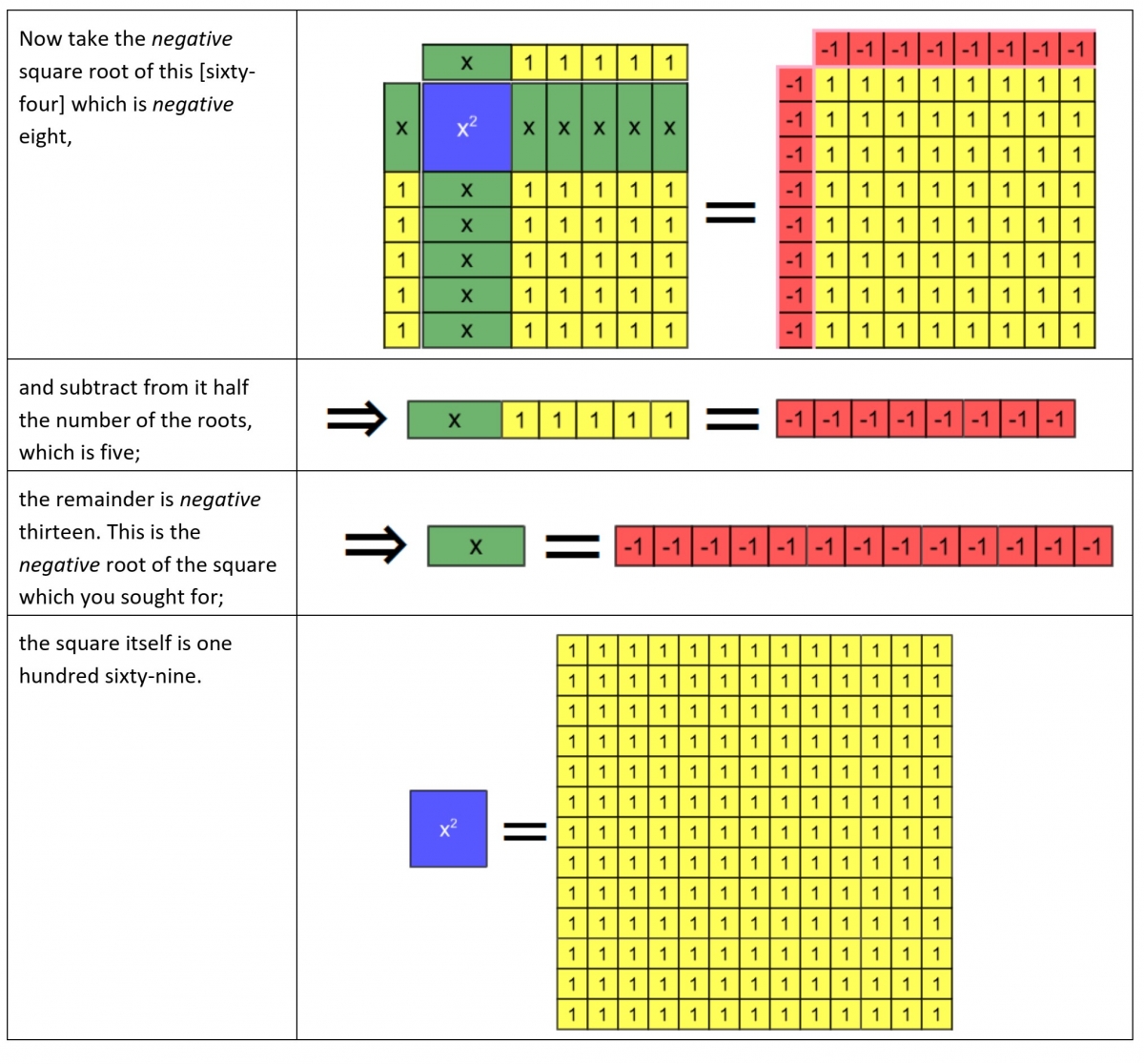- About MAA
- Membership
- MAA Publications
- Periodicals
- Blogs
- MAA Book Series
- MAA Press (an imprint of the AMS)
- MAA Notes
- MAA Reviews
- Mathematical Communication
- Information for Libraries
- Author Resources
- Advertise with MAA
- Meetings
- Competitions
- Programs
- Communities
- MAA Sections
- SIGMAA
- MAA Connect
- Students
- MAA Awards
- Awards Booklets
- Writing Awards
- Teaching Awards
- Service Awards
- Research Awards
- Lecture Awards
- Putnam Competition Individual and Team Winners
- D. E. Shaw Group AMC 8 Awards & Certificates
- Maryam Mirzakhani AMC 10 A Awards & Certificates
- Two Sigma AMC 10 B Awards & Certificates
- Jane Street AMC 12 A Awards & Certificates
- Akamai AMC 12 B Awards & Certificates
- High School Teachers
- News
You are here
Algebra Tiles Explorations of al-Khwārizmī ’s Equation Types: Roots and Squares are Equal to Numbers
In our example for this case (taken from [Rosen 1831, 8]), we first model al-Khwārizmī’s procedure for producing the positive root of the given quadratic. We then illustrate how the use of algebra tiles suggests a modification of that procedure that produces the negative root. Here and in our other examples of compound species, it is important for students to be aware that whenever al-Khwārizmī added a quantity associated with one side of an equation (e.g., the second step of Example 7a), it is implied by the algebra tile representation that the same quantity is added to the other side as well. A classroom discussion of why this is necessary in the algebra tile representation, and also why it is not needed in al-Khwārizmī’s verbal description of his procedure, could be fruitful with prospective teachers.
Example 7a: Roots and Squares are Equal to Numbers (Type 4), positive solution

The procedure for obtaining the negative solution was not discussed in al-Khwārizmī’s solution, due to the restrictions in his number system that were mentioned in the last section. Below, we show a procedure for obtaining the negative solution by involving negative tiles to represent the extraction of a negative square root.
Example 7b: Roots and Squares are Equal to Numbers (Type 4), negative solution

Günhan Caglayan (New Jersey City University), "Algebra Tiles Explorations of al-Khwārizmī ’s Equation Types: Roots and Squares are Equal to Numbers," Convergence (October 2021)




